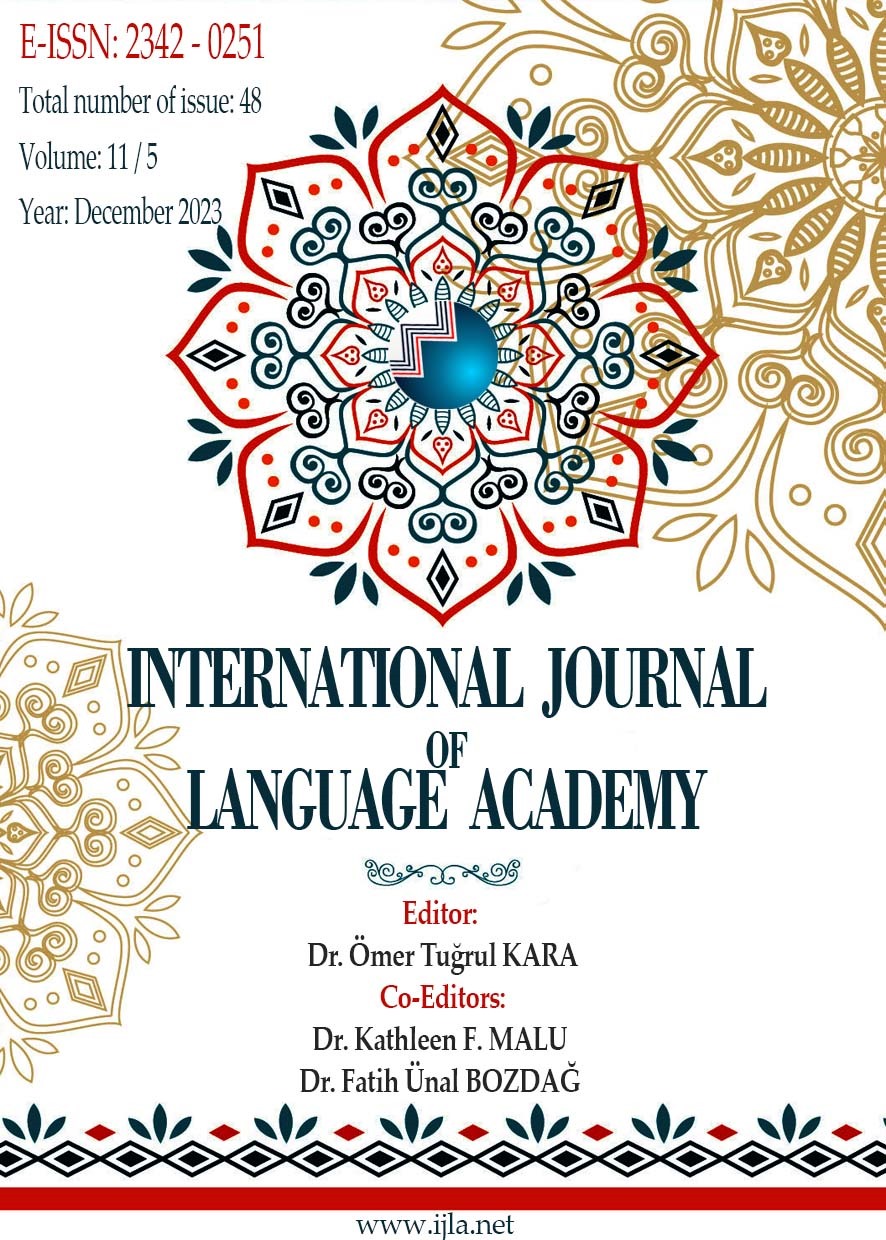ANTİK YUNAN MİTLERİNİN POSTMODERN MİTLERE DÖNÜŞÜMÜ: BLADE RUNNER FİLMLERİNİN METİNLERARASI/ GÖSTERGELERARASI ÇÖZÜMLEMESİ
Author :
Abstract
Bu çalışmada yazın ile sanat ilişkisi bağlamında antik Yunan mitleri ile postmodern Hollywood klasikleri olan Blade Runner ve Blade Runner 2049 filmleri arasındaki metinlerarası/göstergelerarası bağların çözümlenmesi amaçlanmaktadır. Bu amaç doğrultusunda mitin doğasına ilişkin açıklayıcı bilgiler verilip, sinemanın mit ile etkileşimsel ve karşılıklı bir süreçten beslenerek kurgusal bir gerçeklik inşa ettiği vurgulanmıştır. Çalışma kapsamında çözümlemesi yapılan Blade Runner filmlerinin inşa ettikleri kurgusal gerçeklikte postmodern dünyada insan olmanın anlamını sorgulayarak tıpkı mitler gibi varoluşsal sorunlara odaklandığı ve metinlerarası/göstergelerarası bağlarla mitlerin yinelenen bir inşasını sundukları tespit edilmiştir. Filmlerdeki karakterlerin özelliklerinin ve hikâyelerinin antik Yunan mitolojisinin kahramanlarından olan Prometheus’un, Talos’un ve Pygmalion’un Galatea’sının mitik anlatıları ile benzerlikler sergilediği, özellikle simgesel unsurlar üzerinden bu kahramanlara göndermeler yapıldığı belirlenmiştir. Bu bağlamda Blade Runner filmlerinde replikant adı verilen, insanın bir kopyası niteliğindeki robotlar üzerinden Prometheus mitinde öne çıkan ‘ateş’ simgesine, bilince ve özgürlük-köle sorununa ilişkin göndermeler yapıldığı, bu insanımsı robotların ölümsüzlük arzusunun antik robot Talos’un mitik anlatısını anıştırdığı bulgularına ulaşılmıştır. Filmlerden elde edilen bir diğer bulgu ise Pygmalion’un Galatea’sının teknolojinin sunduğu olanaklarla yaratılan bir kadın simülasyonu üzerinden beyaz perdede yeniden yaratıldığıdır. Her iki filmden elde edilen bu bulgular Blade Runner filmlerinde metinlerarası/göstergelerarası yöntemle antik Yunan mitlerinin bir anlamda postmodern mitlere dönüştüğünü ve böylece kültürel aktarımın gerçekleştirilmesinde sinemanın önemli bir role sahip olduğunu göstermektedir.
Keywords
Abstract
This study aims to analyze the intertextual/intersemiotic links between ancient Greek myths and the postmodern Hollywood classics Blade Runner and Blade Runner 2049 in the context of the relationship between literature and art. For this purpose, explanatory information about the nature of myths is given and it is argued that cinema builds a fictional reality established upon its interaction and reciprocity with myth. It is determined that the Blade Runner films analyzed in this study focus on existential problems, as do myths, by questioning the meaning of being human in the postmodern world through the fictional reality that they construct, and they present a reproduction of myths through intertextual/intersemiotic connections. The characteristics and stories of the characters in the films exhibit similarity to the mythic narratives of heroes of ancient Greek mythology such as Prometheus, Talos, and Pygmalion’s Galatea, and references are made to these heroes in the films, especially through symbolic elements. This study shows that the Blade Runner films make references to consciousness, the freedom-slave problem, and the symbol of fire prominent in the myth of Prometheus. These references are made via robots called replicants, which are copies of humans. The desire of these humanoid robots for immortality is reminiscent of the mythic narrative of the ancient robot Talos. The films also cinematize and recreate Pygmalion’s Galatea through a female simulation created with the possibilities offered by technology. The results obtained from the analysis of both films show that the Blade Runner films, in a sense, transform ancient Greek myths into postmodern myths through the intertextual/intersemiotic method and that cinema plays an important role in cultural transmission.
